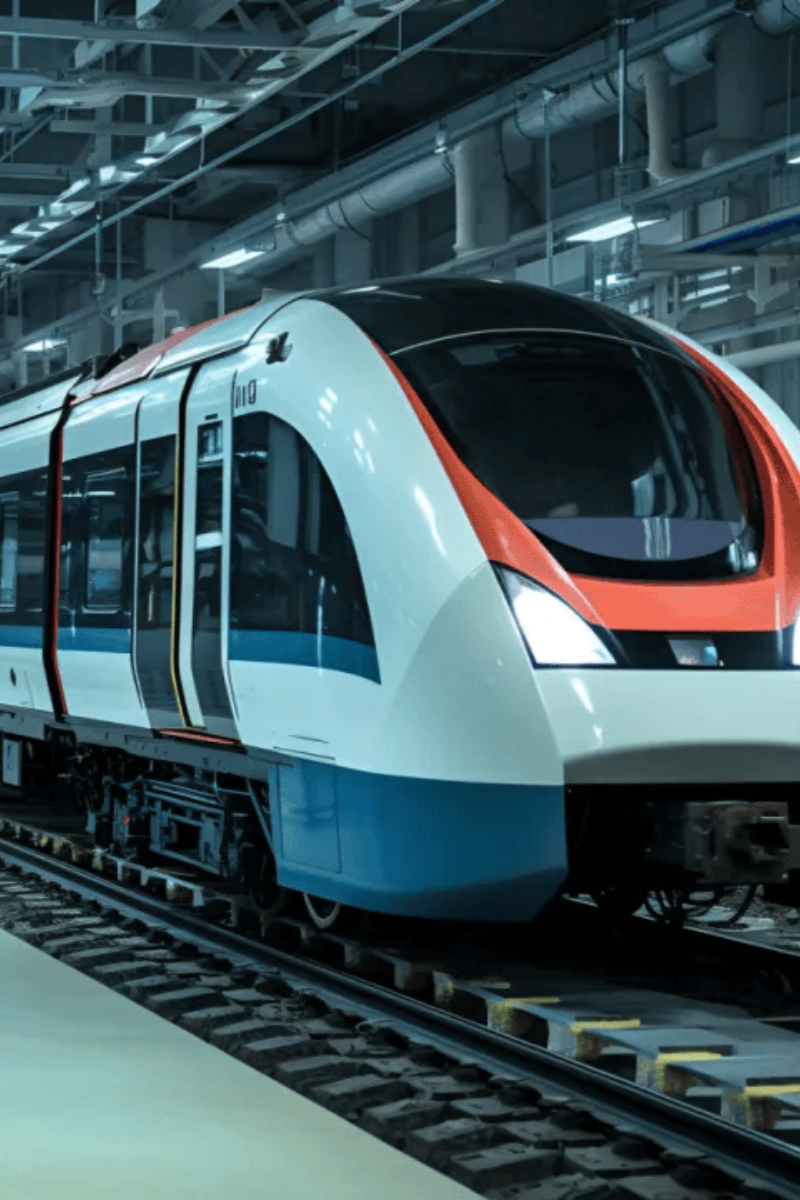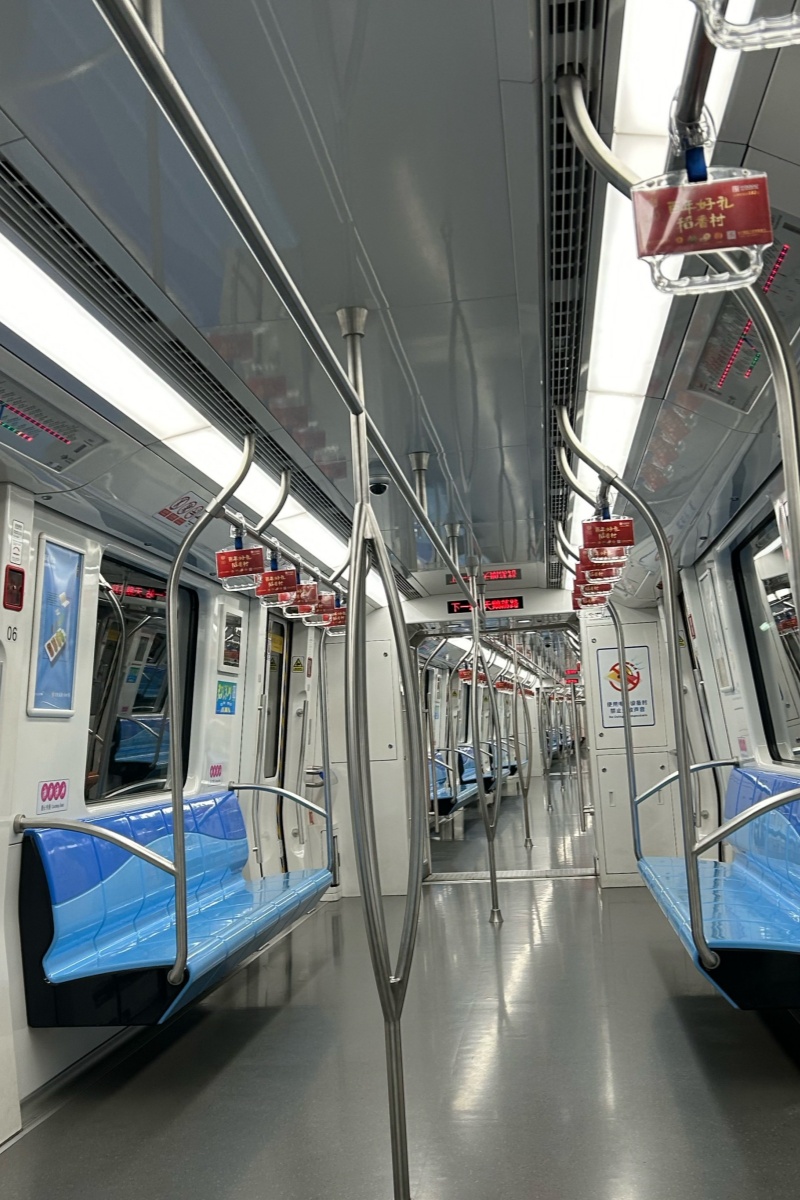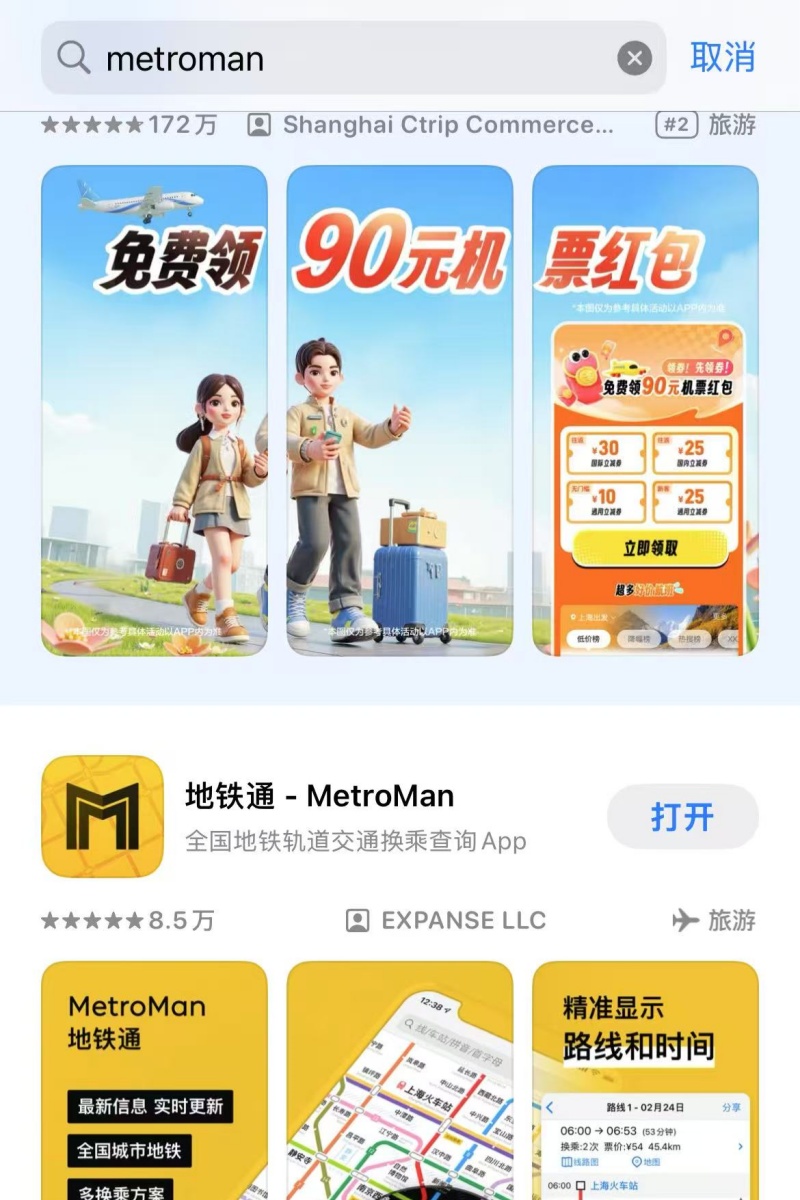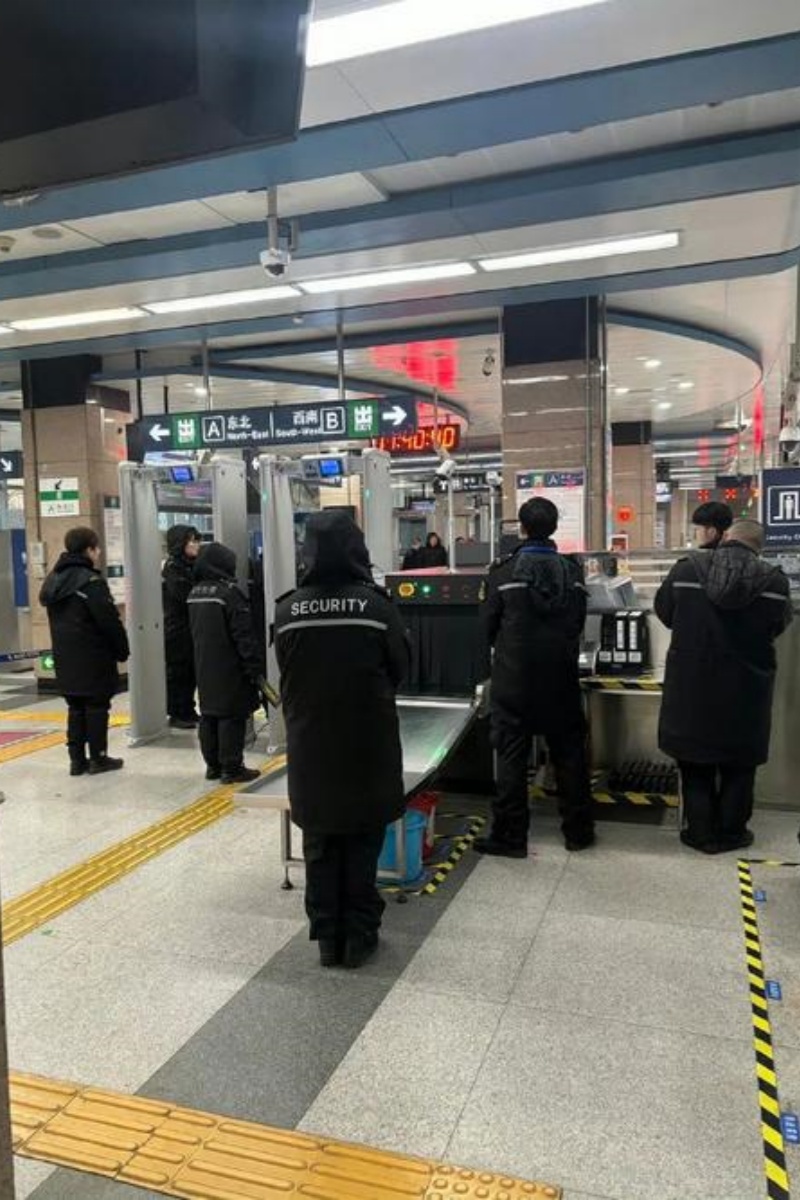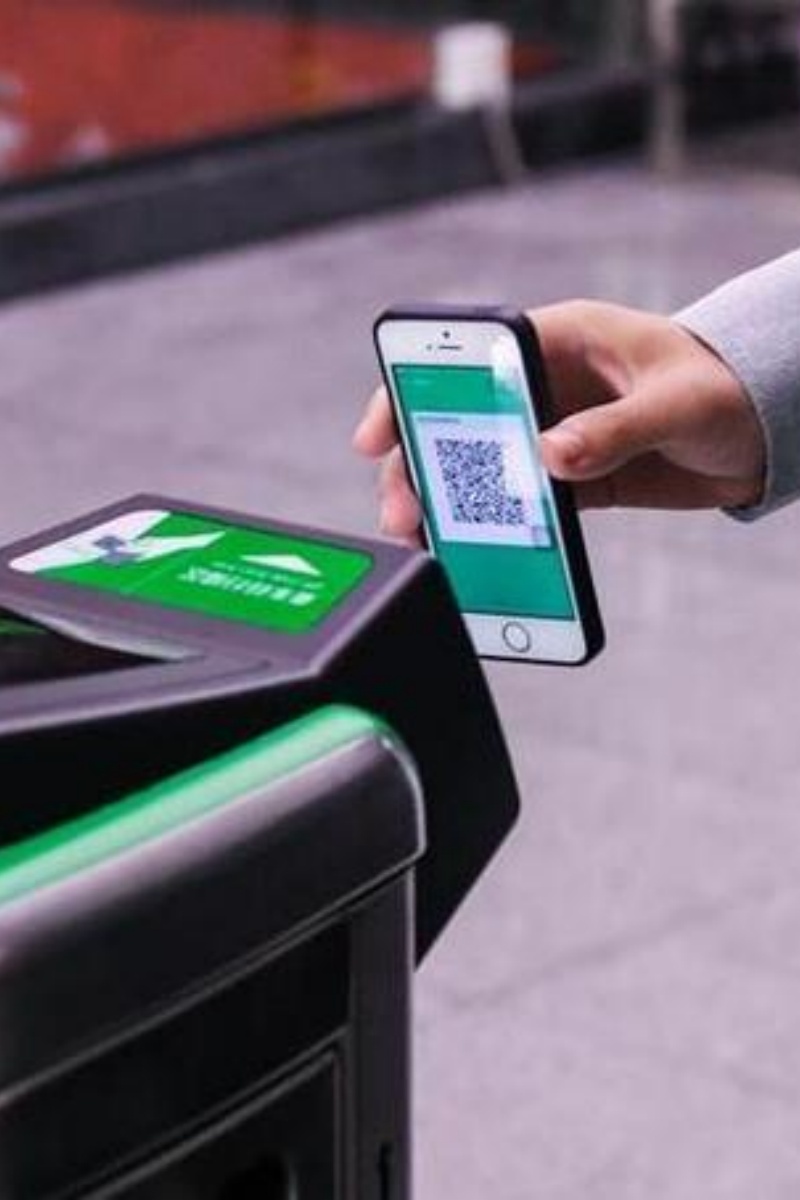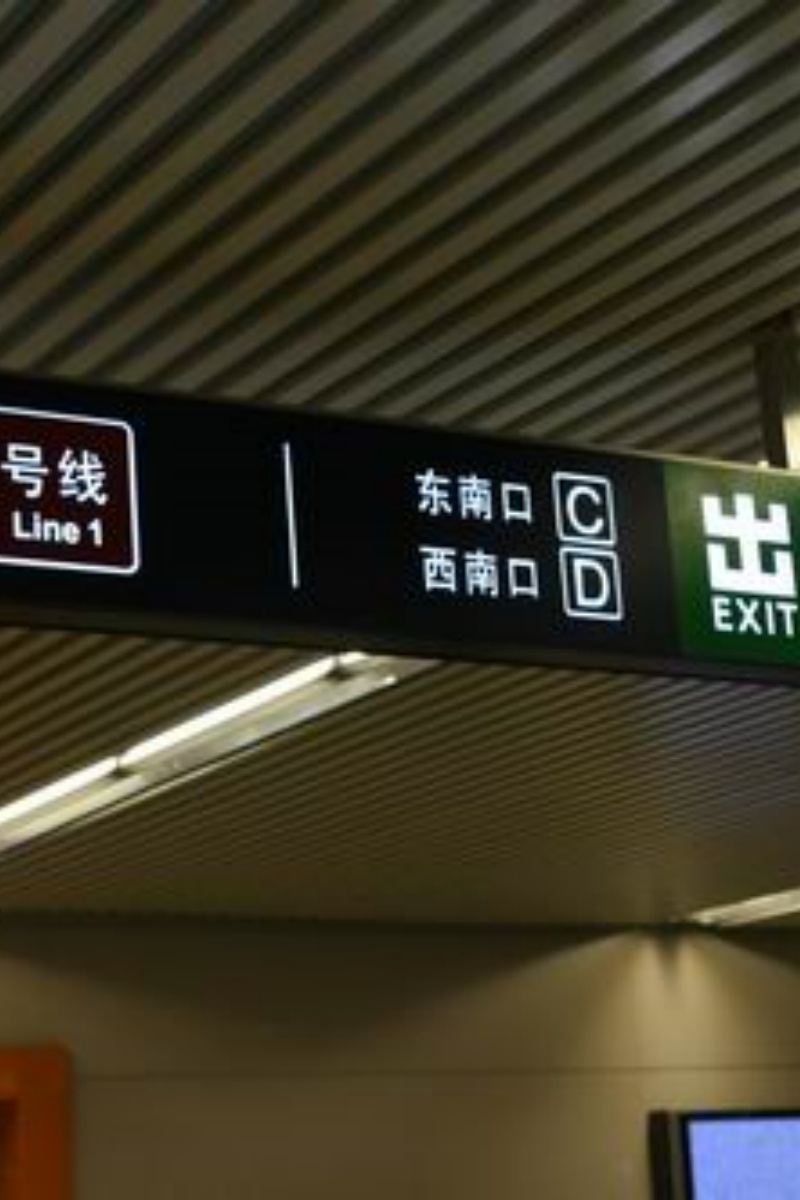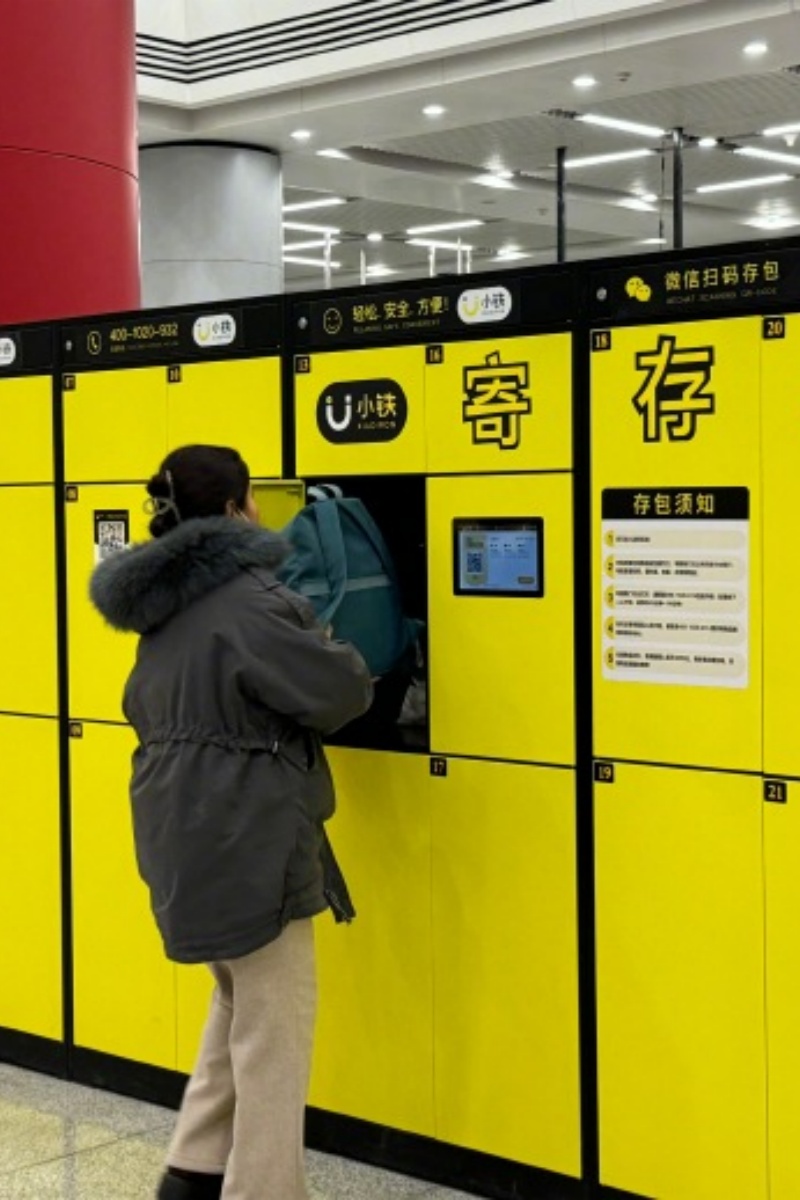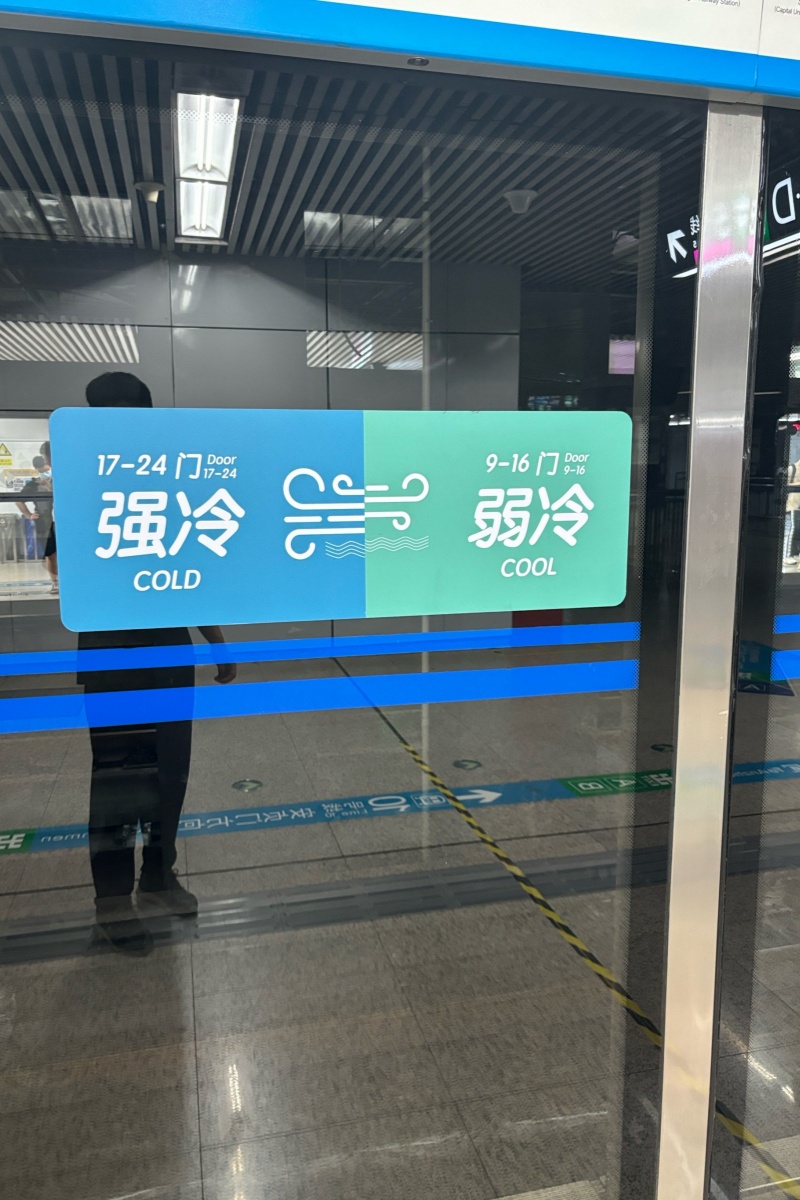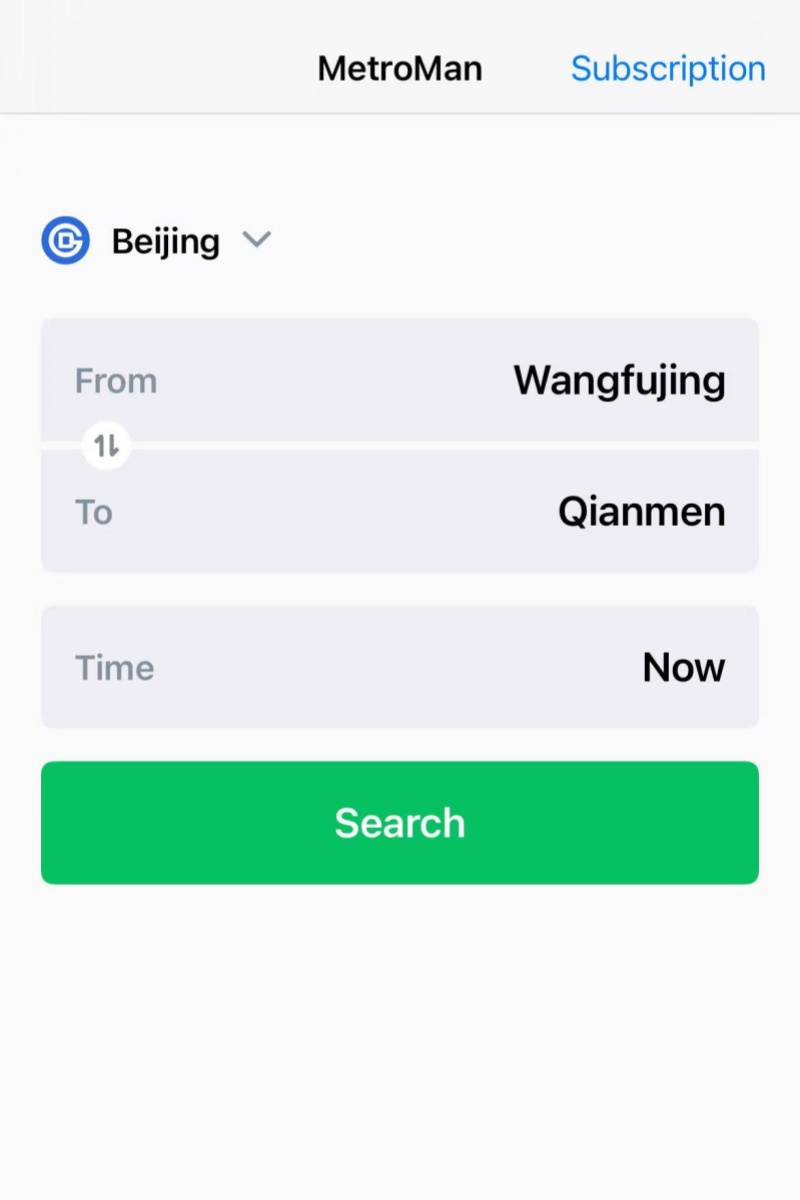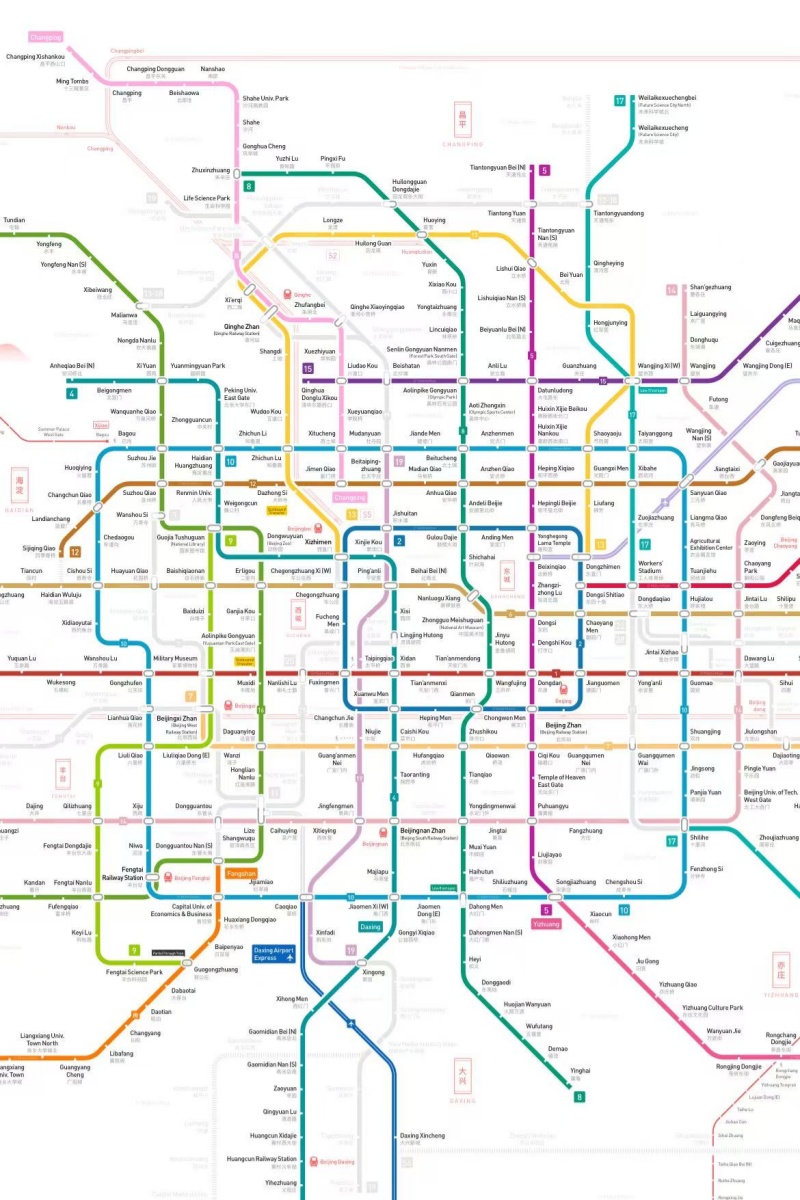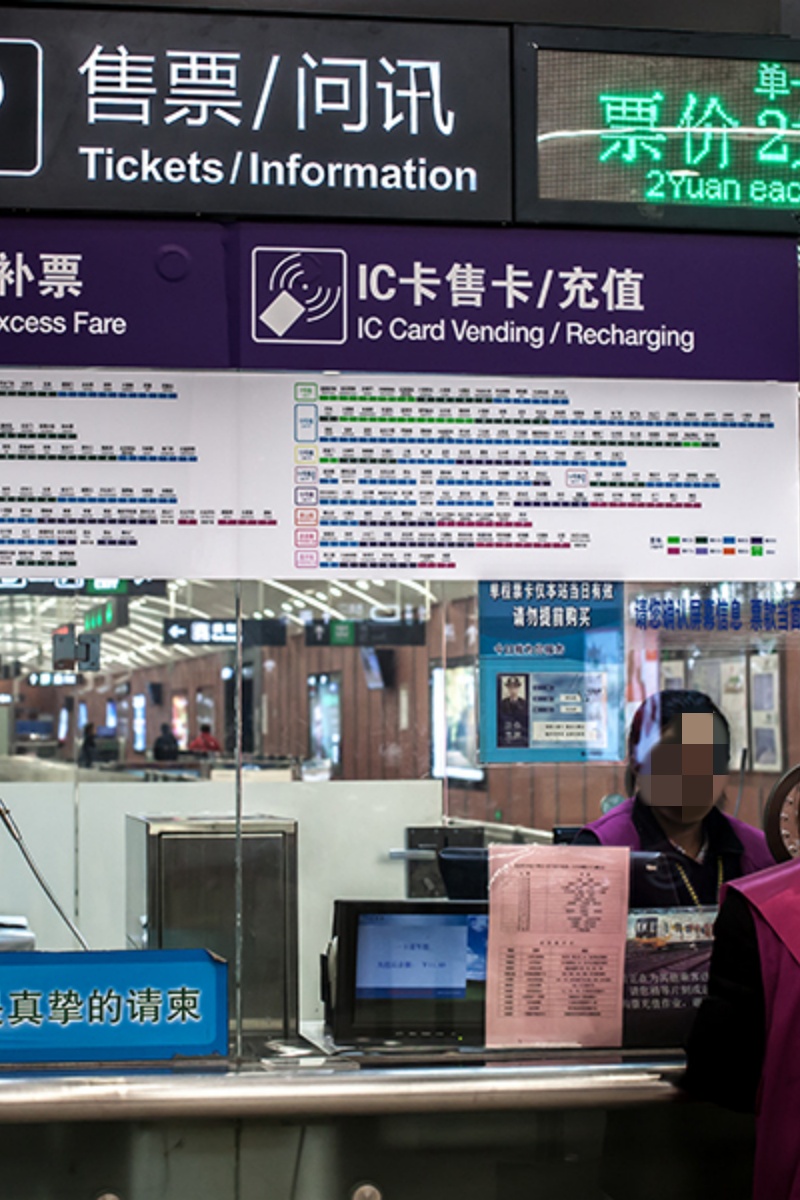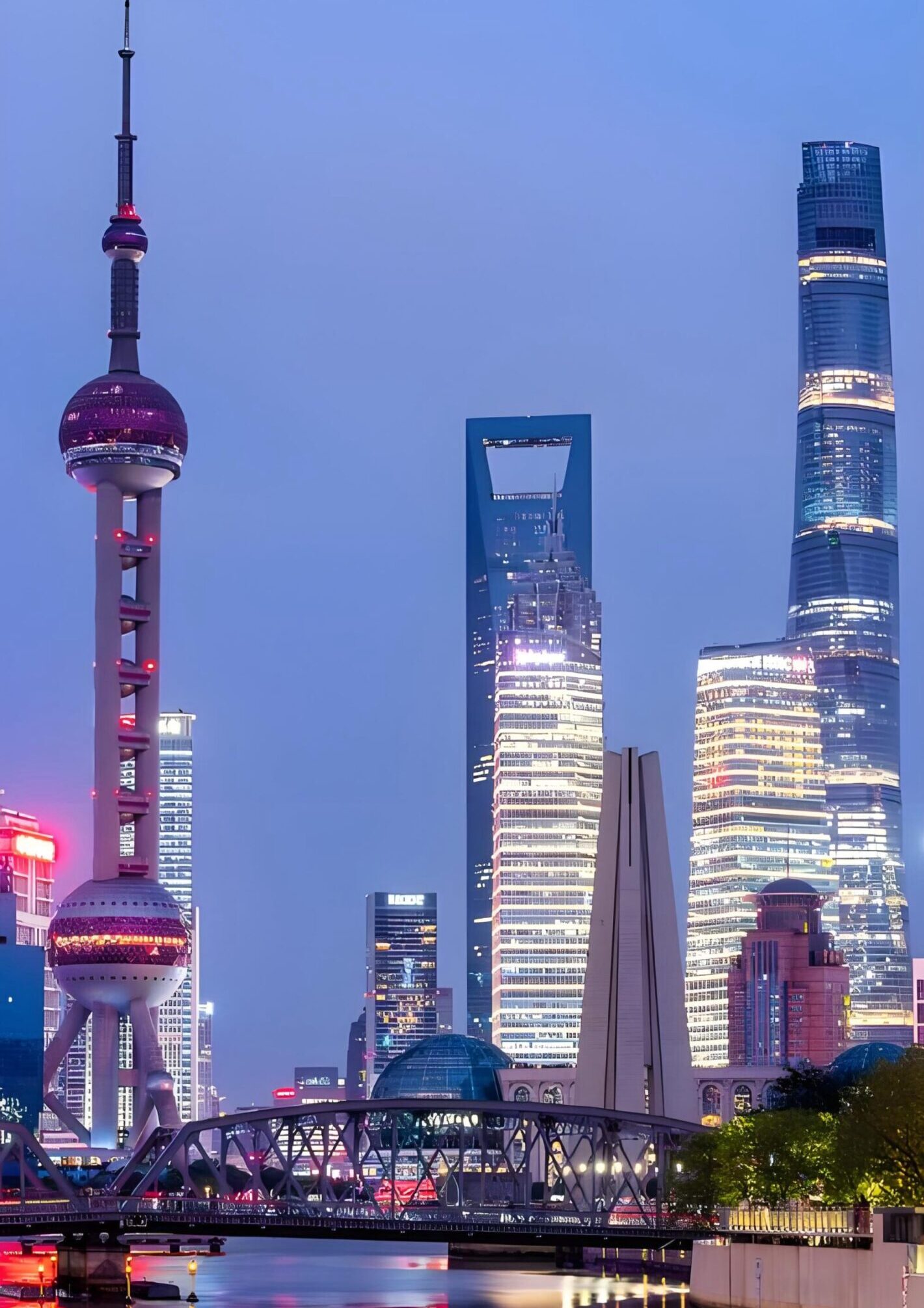No matter which Chinese city you land in, one thing’s pretty much guaranteed—you’ll end up on the china metro. And honestly? That’s not bad at all. These underground systems are cheap, fast, and way more organized than most people expect. But for first-time visitors, figuring out routes, payment options, and exits can still feel overwhelming. Should you scan a QR code or buy a paper ticket? What if the signs are only in Chinese? This guide walks you through the whole thing—step by step. From picking the right app to understanding local rules (yes, no sipping bubble tea on board), we’ve got all the practical stuff covered—minus the fluff.
Why the China Metro Is So Impressive
- Exterior of the Metro Train
- Interior of the Metro Train
Massive and Expanding
The scale of the China Metro is hard to overstate. Cities like Shanghai, Beijing, and Guangzhou have built metro systems that are among the largest in the world. For instance, Shanghai Metro alone spans over 800 km, beating even London and New York combined. You’ll find stations at airports, inside shopping malls, and tucked between temples—urban planning here really plays the long game.
But it’s not just about size. The expansion never stops. Just last year, China’s Ministry of Transport approved new lines in over 10 cities. Smaller places like Suzhou or Foshan are getting sleek underground networks too. What’s impressive is how seamlessly these new lines plug into existing routes. Even as networks grow, they stay organized and rider-friendly.
If you think subway construction takes forever elsewhere, you’ll be surprised here. China metro systems seem to appear overnight. The government pushes projects fast, often finishing years ahead of schedule. No wonder locals say, “In China, even subways don’t take breaks.” That’s not an exaggeration—it’s a mindset.
Clean and Safe
One of the first things you’ll notice on the china metro? No trash. Not even dust. Whether you're riding Line 2 in Shanghai or Line 6 in Chengdu, stations sparkle. Staff mop regularly. Trash bins get emptied on schedule. Even during peak hours, it rarely feels gross. Cleanliness is more than a goal here—it’s a baseline expectation.
Then there’s safety. You won’t find sketchy underpasses or dark corners. Surveillance is everywhere, and security staff are visible but not intimidating. Most stations include platform screen doors that prevent people from falling onto tracks—a feature many Western cities still lack. Incidents are rare, and when something does happen, help arrives fast.
That sense of security extends to passengers too. Locals often nap on the train, headphones in, bags on laps. No one's clutching their purse or watching their back. This trust doesn't come from luck—it’s baked into how China metro networks are built and run. It’s quiet, structured, and feels... well, safe.
Built for Everyday Life
Unlike some transport systems that cater mainly to commuters or travelers, the China metro is a public space woven into local life. Students ride it to school, grannies take it to parks, office workers scroll silently between stops. You’ll see vendors hauling boxes and kids in panda backpacks—it’s China’s daily pulse in motion.
Take exits for example. Each station may have 8–12 of them, clearly labeled with directions to local streets, hospitals, or shopping malls. On your way to the Summer Palace, hop off at Beigongmen Station—just 3 RMB and you’re at the gate. Want the Bund? Take Line 10 to East Nanjing Road. Check out routes and fares in advance if you want the exact exit number.
It’s also tech-savvy. QR codes, e-payments, route prediction—it’s all there. No app? Just scan at the gate. Lost? Digital kiosks help. Need help? Staff will show you the right escalator. The china metro system doesn’t just get you from A to B. It respects your time, your effort, and even your mobile battery life. What more could you ask?
No matter which Chinese city you land in, one thing’s pretty much guaranteed—you’ll end up on the china metro. And honestly? That’s not bad at all. These underground systems are cheap, fast, and way more organized than most people expect. But for first-time visitors, figuring out routes, payment options, and exits can still feel overwhelming. Should you scan a QR code or buy a paper ticket? What if the signs are only in Chinese? This guide walks you through the whole thing—step by step. From picking the right app to understanding local rules (yes, no sipping bubble tea on board), we’ve got all the practical stuff covered—minus the fluff.
How to Use the China Metro in 5 Easy Steps
- Download a Metro App
- Enter the Station and Pass Security
- Choose a Payment Method
- Follow the Signs and Ride
The china metro is fast, affordable, and easy to use—even for tourists who don’t speak Chinese. Here’s how to ride it like a local in just five steps.
1. Download a Metro App
Before heading out, download a metro app to plan your route. MetroMan is one of the best options for travelers—it’s in English, works offline, and supports most major cities in China. You can also try Amap (Gaode) or Baidu Maps, but they work best if you understand a little Chinese.
2. Enter the Station and Pass Security
All metro stations in China have a quick security check. You’ll need to put your bag through an X-ray scanner, and your drink might be tested or sipped. It's routine and takes less than a minute. No ID is required.
3. Choose a Payment Method
There are several ways to pay for your china metro ride:
- Ticket Machine: Use cash or mobile payment to buy a single-ride ticket. Machines have English-language options.
- Transport Card: Rechargeable cards are available in most cities (e.g., Yikatong in Beijing, Shanghai Jiaotong Card). Best for longer stays.
- Alipay or WeChat: Open the transport QR code and scan at the gate. No Chinese bank needed if using Tour Pass.
- Contactless Foreign Bank Cards: Available in some cities like Beijing, but not widely supported.
4. Follow the Signs and Ride
Metro lines are color-coded and stations have bilingual signage. Check the train line maps, confirm your direction, and board the train. Stations and stops are announced in both Chinese and English.
5. Exit at the Right Spot
When you reach your destination, follow the Exit (出口) signs. Many stations have more than 10 exits, so check the wall maps to find the one closest to your street, attraction, or hotel.
Onboard Facilities: What to Expect
- Accessibile Elevator
- Luggage Storage
- Strong vs. Weak Cars
The china metro isn’t just convenient—it’s impressively modern. Whether you're carrying a suitcase or riding with family, here’s what to expect onboard and in the station.
Elevators and Escalators
Most metro stations have multiple exits, stairs, and escalators. If you have luggage or mobility needs, follow the signs with the wheelchair icon—they’ll guide you to elevators. These elevators are clean, fast, and located near security staff for safety.
Tip: In larger stations, elevators may be tucked in a corner. Look up at overhead signage to find them.
Luggage Storage Options
Small bags and backpacks are fine onboard, but if you’re carrying a suitcase, avoid rush hour—it can get packed.In major hubs like Shanghai Hongqiao, Beijing South, or Guangzhou East, you’ll find luggage lockers near exits or ticket halls. These usually cost 10–20 RMB per day and are coin or mobile-payment operated. No reservation is needed.
Apps That Make Your Ride Easier
- MetroMan: Best for route planning and transfer info
- Amap (Gaode): Live train locations and exit directions
- Baidu Maps: Helpful for complex station layouts and walking routes
These apps often show which exit to use, which is very useful when a station has 10+ options and you don’t want to walk in the wrong direction.
Air Conditioning Zones: Strong vs. Weak Cars
If you’ve ever felt frozen solid on public transit, good news—many China metro lines now label their carriages by cooling level. It’s a small detail, but one that locals care about a lot—especially in summer.In cities like Shanghai, Beijing, and Guangzhou, trains often have signs at platform level or on digital screens marking which cars are strongly air-conditioned (强冷) and which ones are mildly cooled (弱冷).In Beijing,the first two and last two cars are strongly air-conditioned, while the middle two cars have weaker cooling. Look for signs above the platform or stickers near the doors—they’ll guide you to the car that fits your comfort level.
How to Check Metro Routes in China
- Use a Metroman
- In-Station Maps and Signage
- Ask Staff
Use a Metro App Like Locals Do
Navigating the china metro is way easier with an app. Most locals wouldn’t ride without one—and neither should you. These apps don’t just tell you where to go; they show you how to get there quickly, what train car to board, and even which exit to take. Tourists love them because they skip the guesswork. And the best part? Many of them are fully in English or offer clear icons and colors you can follow.
The top pick is MetroMan. It’s lightweight, fast, and shows full metro maps for major cities like Shanghai, Beijing, Chengdu, and more. Just type in your start and end stations, and it’ll tell you the line, transfer point, travel time, and ticket price. Don’t want to read any Chinese? No problem—MetroMan is built for that. For more detailed street-level navigation, Amap (Gaode) and Baidu Maps are also excellent. Gaode now supports partial English, and Baidu’s metro overlay includes station layouts and platform numbers.
Whether you’re heading to the airport or the Temple of Heaven, your phone is your best friend. Just make sure you download the app before you go underground—some stations have spotty signal. Once you’ve got your route, you’ll look like a pro. No need to ask around or stand confused by a wall map. The china metro system is complex, but your app makes it feel like second nature.
Trust the In-Station Maps and Signage
You don’t need to speak Mandarin to read a china metro station map. They’re bold, color-coded, and translated into English. Most are located at the entrance, near escalators, and by ticket machines. Each map shows all metro lines, their numbers, colors, and terminal stations. Transfer stations are clearly marked with dotted circles or icons, and some even show how long each leg of the trip takes.
Once you’re on the platform, look up. LED maps above the doors track your progress stop by stop. Not only do they show upcoming stations, but they also highlight which side the doors will open on—handy if you’re carrying bags. These onboard maps also display connecting lines, so you know when and where to transfer. Some cities, like Shenzhen and Chengdu, even show walking distance between connected lines.
Even the exits are detailed. Near every turnstile or escalator, you’ll find diagrams of each exit labeled with what’s nearby—like shopping malls, parks, hospitals, or historic sites. So if you’re visiting Yuyuan Garden, don’t just look for the stop name. Find Exit 1B on the sign—it’ll save you a ten-minute detour. The china metro network doesn’t just move people—it guides them with serious precision.
Ask Staff or Use Visual Aids When in Doubt
If all else fails, don’t panic. Staff at major china metro stations are generally helpful and used to foreign visitors. You don’t need fluent Mandarin—just show them your phone. Whether it's the route on MetroMan or a screenshot from Google Maps, they’ll point you in the right direction. Many service counters in Shanghai, Beijing, and Guangzhou even have English-speaking assistants or QR codes to scan for help.
Beyond staff, some stations also feature touchscreen kiosks for directions. These interactive machines can show station layouts, exits, and routes. Some support English menus, especially in cities with high tourist traffic. You can tap your destination and see walking paths, transfer info, and even nearby attractions. And don’t forget the icons: toilets, elevators, and escalators are always clearly marked with universal symbols.
China’s metro culture leans practical. Locals don’t ask for directions—they use tech. But for travelers, mixing tech and human help is the sweet spot. You’re not expected to figure everything out solo. The china metro system is designed for huge crowds and still finds ways to stay friendly. So go ahead—ask, scan, or screenshot your way through. The whole system is on your side.
Rules and Etiquette: What Not to Do on the China Metro
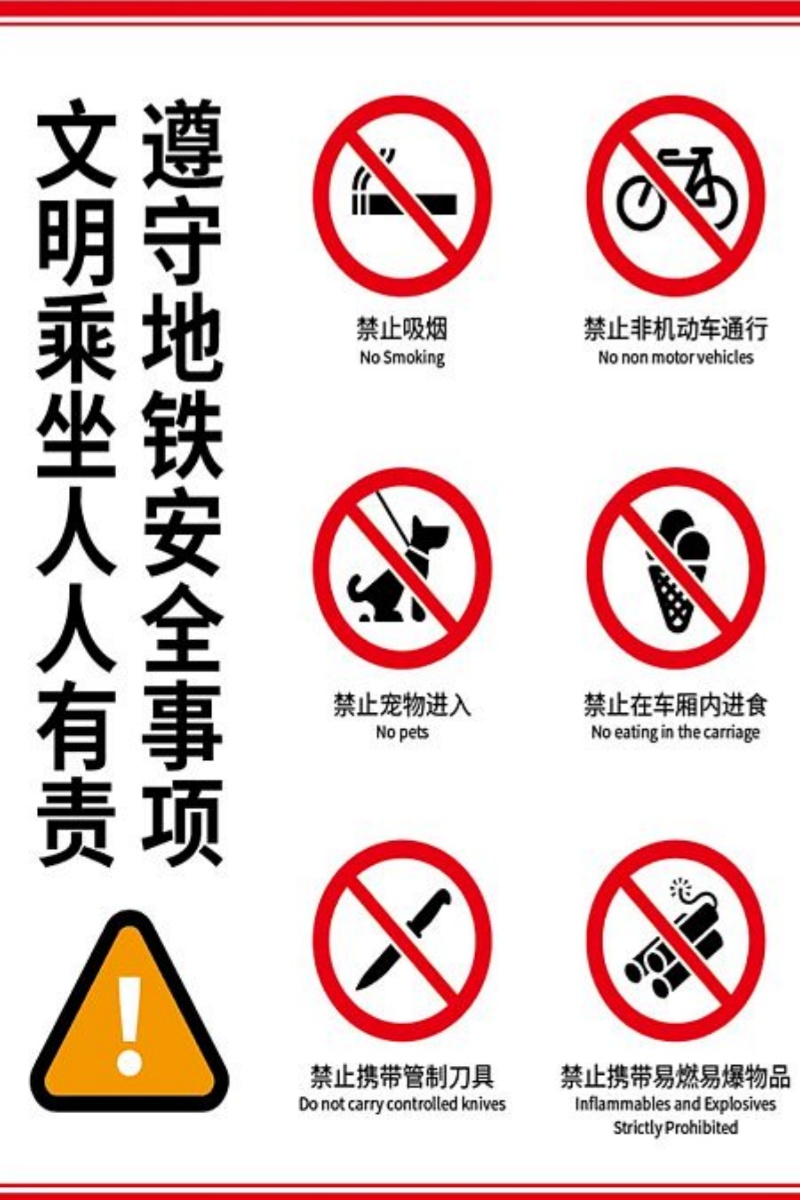
What Not to Do on the China Metro
Eating and Drinking Are Not Allowed
Food and drinks are strictly banned on the china metro. Even holding an open cup of coffee can attract attention from staff or fellow riders. It’s not just about cleanliness—it’s a matter of safety and shared comfort. Sticky floors, strong smells, and food wrappers would turn these quiet carriages into a mess. That’s why cities like Shenzhen and Chengdu enforce this rule strictly, with fines of 50–200 RMB if you’re caught.
Avoid Blocking Doors and Aisles
The china metro system runs like a well-oiled machine—until someone blocks the door. If you hover in the entryway or plant yourself near the middle of the platform, you’re likely to get gently nudged or glared at. Trains in big cities move fast, and delays build up quickly. Standing in the way breaks the rhythm and slows everyone down.
Keep Your Music and Calls Private
Everyone in China is glued to their phone, but few dare to use speakers on the china metro. Whether you’re watching TikTok or calling your mom, keep it on mute or use earphones. Most locals scroll in silence, and loud noise is considered inconsiderate—even childish. It’s not just about manners. On a packed train, any extra sound is magnified tenfold.
Priority Seats Are Not for Everyone
The china metro marks certain seats as priority spots for seniors, pregnant women, or the injured. These are often at the front or end of each carriage, clearly labeled in both English and Chinese. If you’re young and healthy, don’t sit there—unless the train is empty. Locals usually won’t say anything, but they’ll notice. And trust us: you don’t want to be that tourist.
Follow Security Check Procedures
Unlike some systems in the West, the china metro has airport-style security. Every rider passes their bags through an X-ray scanner. Occasionally, you’ll be asked to sip your drink or show metal items. Don’t resist or argue—it only takes a moment and everyone does it. In Beijing alone, over 10 million passengers pass through metro security each day without issue.
While it might feel excessive at first, this is part of what makes the china metro system so safe. You’ll rarely see aggressive behavior or theft in stations. Guards are visible, polite, and quick. Just follow their instructions, smile if needed, and move on. The smoother you go with the flow, the easier your ride becomes.
China Metro vs. U.S. Metro Systems
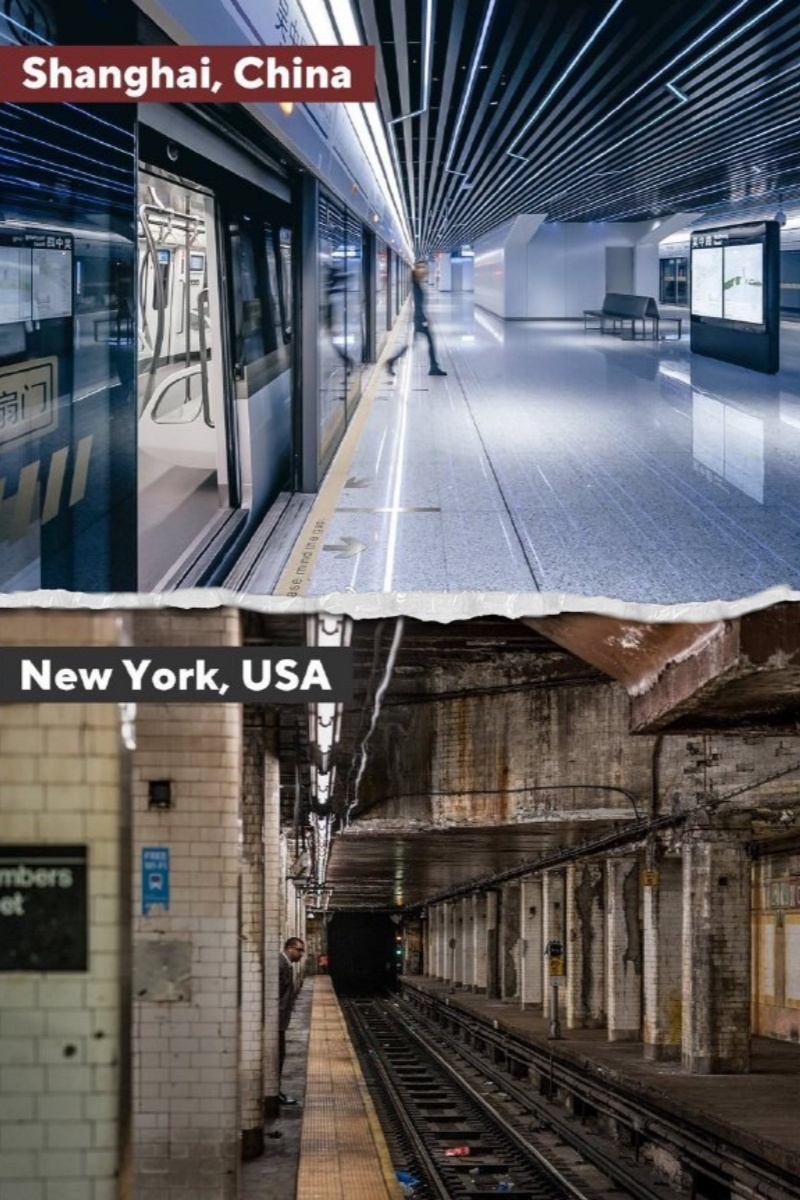
Navigation: Who Makes It Easier for Riders?
Let’s talk about getting around. In the China metro, you can land in a station you’ve never seen before and still find your way out in minutes. That’s because signage is consistent, bilingual, and everywhere. From the moment you enter, arrows point you to exits, transfer lines, or even street names. Many stations also have digital floor maps near escalators. It's almost hard to get lost.
Now compare that to U.S. systems like New York or Boston. Signs often vary between stations—even within the same line. Some platforms lack electronic boards, and you might not know when the next train comes. Transfers are poorly marked. If you're new, it's easy to head the wrong way or end up on the express line by accident.
Another edge? Exit labeling. China metro systems show what’s near each exit: banks, malls, landmarks—even convenience stores. In contrast, U.S. stations usually say “Exit A” or “Stairs,” with little hint of what's outside. This difference reflects a rider-first approach in China. Stations don’t just move people—they guide them all the way.
Punctuality and Frequency: Who’s More Reliable?
Missed your train? In the china metro, no problem. Another one’s coming in 2–4 minutes. And it will arrive exactly when the app says it will. Trains follow tight schedules, even during rush hour. That means less waiting, less guessing, and more trust in the system. Timing here isn’t a vague suggestion—it’s baked into how the system runs.
Now hop over to the U.S., and it’s a different story. Delays are frequent, even on major lines like NYC’s 4/5 or Chicago’s Blue Line. You might wait 12 minutes, then two trains come at once. Scheduled times are more like estimates. In some cities, the official apps don’t even offer live updates. Riders rely on Twitter accounts or station gossip to know what’s really happening.
That consistency is what makes china metro systems so impressive. You can plan your day around them. Need to get to a high-speed train by 11:23? You’ll make it. U.S. metros don’t give that level of confidence. The structure just isn’t there. In China, time is money—and the trains seem to know that.
Affordability and Accessibility for Everyone
When locals say the china metro is for everyone, they mean it. Fares are distance-based and incredibly cheap. A short ride costs just 2–3 RMB (less than $0.50 USD), and even the longest journey usually won’t top 9 RMB. Seniors and students often receive discounts. You won’t see gated VIP areas or “first-class” subway cars—everyone rides the same system.
Compare that to metros in Washington, D.C. or San Francisco, where single rides can exceed $4 USD, especially during peak hours. In New York, a monthly pass costs over $130. That’s a huge burden for low-income riders. And forget about easy intercity transfers—subway to Amtrak to bus often means three different payment systems. In China? You can ride metro to high-speed rail using the same QR code.
Another key difference? Physical accessibility. Elevators, ramps, and tactile paths are standard in most china metro stations, especially after 2015’s nationwide accessibility policy push. In the U.S., only select stations meet ADA standards. Many still lack elevators or working ones. This makes a big difference to elderly passengers, travelers with suitcases, or anyone using a wheelchair.
Frequently Asked Questions (FAQs)
Q: Is the China metro safe at night for solo travelers?
A: Absolutely. The china metro system is known for its strong safety standards. Stations are well-lit, monitored by cameras, and have a strong security presence. Even late at night, trains stay clean and orderly. Many solo female travelers report feeling safer here than on public transit back home. Just avoid the last train rush around closing time.
Q: How do I pay for metro rides if I don’t have a Chinese bank account?
A: Good news—you don’t need one! You can use Alipay’s Tour Pass, which accepts foreign cards. Just link your Visa or Mastercard and scan at the gate. Some cities also accept contactless foreign cards directly (like Beijing). Worst case? Use cash at the ticket machines—they offer English menus and are super easy.
Q: Are there toilets in China metro stations?
A: Yes—and that’s one thing travelers love. Most china metro stations have public restrooms, and they’re usually clean. Some even have Western-style toilets. Just follow the signs or ask staff. Pro tip: bring tissue and hand sanitizer, just in case.
Q: What’s the best time to avoid crowds on the China metro?
A: If you’re not into packed trains, avoid china metro stations during local rush hours—usually 7:30–9:30 AM and 5:00–7:30 PM. During those times, it gets tight. Very tight. Trains come fast, but you might still need to squeeze in. For a smoother ride, aim for mid-morning or early afternoon. Weekends are less crowded but can be busy near tourist areas.
Q: Are children charged for metro rides in China?
A: Kids under 1.3 meters (about 4'3") usually ride the china metro for free. No ticket needed, but they must be with an adult. Older kids need regular fares. There’s no universal child card—rules vary slightly by city. If in doubt, ask staff at the ticket counter or scan your Alipay and see if the gate opens.
Q: Do all metro stations have elevators for disabled travelers or elderly people?
A: Most china metro stations built after 2010 are accessibility-friendly, with elevators, tactile paving, and priority seating. That said, older stations might have limited facilities or require surface detours to reach lifts. Look for the wheelchair symbol on signs. If you’re traveling with elderly family, avoid transfers with long walking distances—some interchange stations are huge!
Q: Can I bring pets on the China metro?
A: Not really. China metro systems generally don’t allow pets, even small ones in carriers. There are a few exceptions in some cities, but most stations strictly prohibit animals for hygiene and safety reasons. Guide dogs are allowed, but only with proper documentation. If you’re traveling with a pet, taxis or pet-friendly ride apps are your best bet.
Q: Can I get a refund if I buy the wrong metro ticket?
A: Yes, but it depends on the city. In many china metro systems, you can return an unused single-ride ticket at the service counter. Some stations may ask you to fill out a short form or provide ID. But once the ticket is scanned or used to enter, refunds usually aren’t possible. If you're unsure, it's safer to use a transit card or scan-in payment—it avoids the hassle entirely.
Q: Any tips to make my China metro ride smoother?
A: Yes—move like the locals. Let people off before you board, and walk with purpose when transferring—some stations are huge. Follow the colored arrows for transfers, not the crowd. If you’re with kids or older folks, head to the ends of the train—more space and priority seating there. Some lines even have quiet cars or women-only sections. Small moves make a big difference on the china metro.
Want more China travel ideas? Check out our city guides on Beijing, Shanghai, Guangzhou, and Chengdu.
